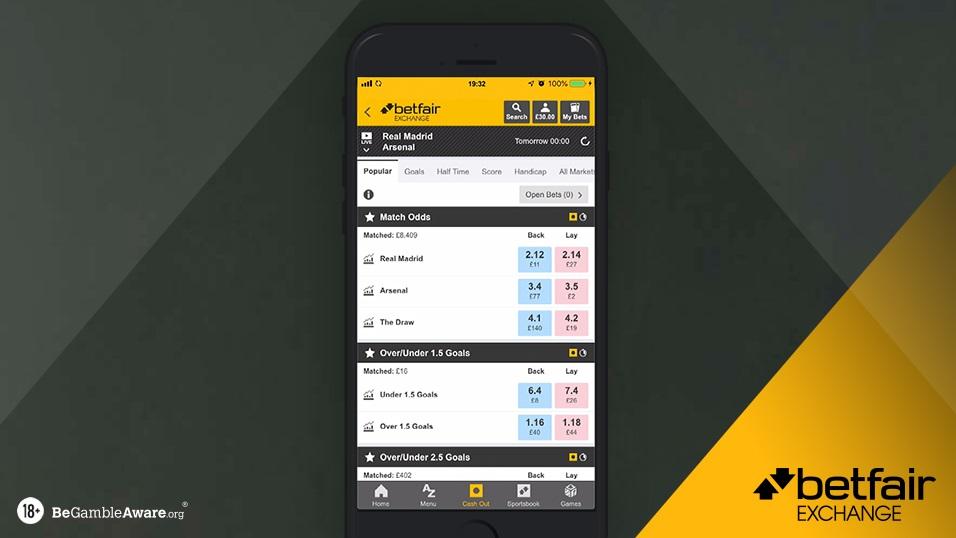What is Dutching on the Betfair Exchange?

· 'Dutching' is a betting technique whereby the punter will have more than one selection within an event, with the main ambition of achieving a specified level of profit overall. In this instance, this technique requires the bettor to stake accordingly across the multiple selections in order to achieve the same return from each of the outcomes.
Defining the term 'Dutching' can be explained in its simplest form by stating that it is a process of placing more than one bet on an event to achieve a positive return if a certain set of results occur. To carry out ‘Dutching’ on the Betfair Exchange, the bettor will select several selections within an event, with stakes divided up across those range of selections to ensure that whatever the outcome across their selections, the returns will all amount to those desired initially. An additional benefit of this approach is that it also spreads the risk over a few possibilities to increase your chances of being on the right side of the outcome, giving you more than one chance to succeed.
How can you use ‘Dutching’?
Deploying this betting technique can prove useful when there are two or more outcomes that you wish to back and have a specified staking amount outlined. Prior to the introduction of the Betfair Exchange, Dutching was sometimes used as an alternate option which enabled bettors to lay, or bet against, a selection through a process of backing all other participants in an event. Importantly, the process of calculating how much needs to be staked on each selection is not always straight-forward, due to varied odds and with consideration of Exchange commissions which need to be factored in.
Dutching Example
Take for example a horse race in which you have identified 2 runners that you’d like to back against the rest of the field; Horse A has odds of 10/1, whilst Horse B has odds of 5/1. With a total stake of £20 it may cross your mind to simply back them both with an even stake of £10 on each selection, however, should Horse A win at 10/1 win your returns would be far greater than if the alternative bet landed.
This aspect of the Dutching technique focusses on reducing the amount staked on the horse with higher odds and increase proportionally the stake on the other until the potential returns for either of the two outcomes are equal.
The mathematical equation behind Dutching is as follows:
1) Firstly, you need to calculate the implied probabilities using both selections’ odds:
Implied Probability of Horse A, the 10/1 runner, winning the event = (1 / (10/1 + 1)) * 100 = 9.09%
Implied Probability of Horse B, the 5/1 runner, winning the event = (1 / (5/1 + 1)) * 100 = 16.67%
2) Then work out the stakes required for both outcomes to return the same amount:
Amount to stake on the 10/1 runner = (9.09 / (16.67 + 9.09)) * £20 = £7.06
Amount to stake on the 5/1 runner = (16.67 / (16.67 + 9.09)) * £20 = £12.94
3) The outcome of the event:
Now with the stakes split evenly, the amount of profit returned if either runner wins is £57.64, with the total return being £77.64 (with your initial £20 stake included). With ‘Dutching’ you’ll either attain the return which you set out to achieve from the starting phase, or of course, if neither Horse A or Horse B selections were to win the race, you’d make a loss of £20 in the example we’ve just covered.
Though it does not offer a guaranteed return, having an understanding of utilising Dutching can prove beneficial, particularly when you are torn between several selections within an event, and wish to cover more than one of those. Furthermore, Dutching is a technique which can also be applied from a ‘Laying’ perspective, whereby you can use the Betfair Exchange to Lay multiple runners in a specified race or participants in an event.
Considering when it may be best to apply Dutching, although it can be potentially deployed successfully on a vast majority of events, it may prove beneficial to take a more patient and systematic approach. Suitable events for Dutching should be identified and outlined prior to using this gambling technique, with a long-range approach likely to reap rewards.
The Dutching Tool
As you can see from our earlier example, Dutching can be quite straight-forward when looking at just the two selections in a specified market on the Betfair Exchange. However, if you were to increase that to a wider range of outcomes that you’d like to cover, it may become rather complicated to establish how much needs to be staked across the entirety of the selections.
Luckily for us, the Betfair Exchange team have developed a ‘Dutching Tool’ which helps to take the strain out of this process and can be quickly used to aid you with your staking approach regarding ‘Dutching’ a race. Simply enter your total stake which you would like to place across your combined selections, and the tool will allow you to clearly visualise how to split your stake across the given number of selections once you’ve clicked on the stake factor button, in order to reach a desired profit return, should one of your selections win that is. As can be seen above, each of the three horses covered within the Dutching bet will create a potential profit of around £22, after deducting the total stakes across the three different bets.
Dutching isn’t just a useful betting technique for Horse Racing and can certainly be utilised across a wide range of sports markets, including Golf, Rugby, Football and much more. It is worth noting that Betfair’s Dutching tool is only available for use on desktop at present.








